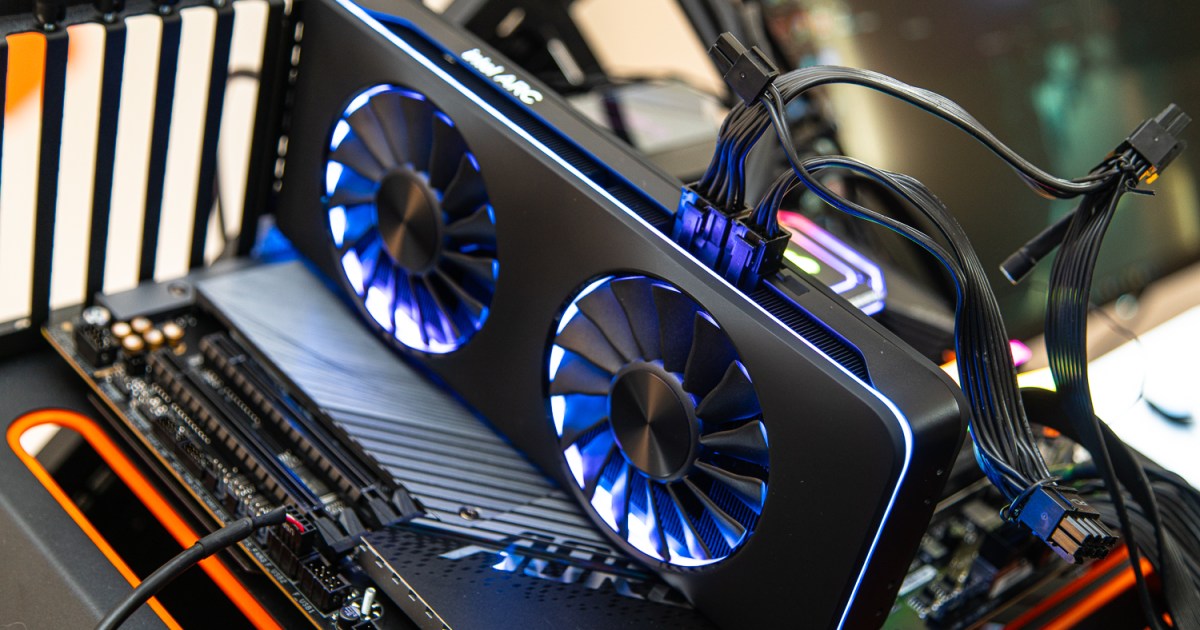Samsung Galaxy Book5 360 Pro vs. MacBook Air 15: a narrower gap
Apple's MacBook Air 15 is a class-leading larger laptop, with great battery life and performance. Can the Samsung Galaxy Book5 Pro 360 compete?

 Mark Coppock / Digital Trends
Mark Coppock / Digital TrendsThere are some great 15-inch laptops, as well as similar-sized 16-inch machines, that have started to take over the large laptop space. The Apple MacBook Air 15 is a great laptop that’s a leader here thanks to a solid build, great performance, and even better battery life.
But Windows laptops have a new weapon in the efficiency wars with Intel’s new Lunar Lake chipsets. The Samsung Galaxy Book5 Pro 360 2-in-1 uses Lunar Lake for better efficiency, but is it enough to take over the crown from the MacBook Air 15? Unfortunately not.
Specs and configurations
| Samsung Galaxy Book5 Pro 360 | Apple MacBook Air 15 | |
| Dimensions | 13.99 x 9.93 x 0.50 inches | 13.40 inches x 9.35 inches x 0.45 inches |
| Weight | 3.73 pounds | 3.3 pounds |
| Processor | Intel Core Ultra 7 256V | Apple M3 (8 cores) |
| Graphics | Intel Arc 140V | 10-core GPU |
| RAM | 16GB LPDDR5X RAM | 16GB 24GB |
| Display | 16.0-inch 16:10 2.8K (2880 x 1800) AMOLED, 120Hz | 15.3-inch 16:10 Liquid Retina IPS (2880 x 1864), 60Hz |
| Storage | 1TB M.2 NVMe SSD | 256GB SSD 512GB SSD 1TB SSD 2TB SSD |
| Touch | Yes | No |
| Ports | 2 x USB-C with Thunderbolt 4 1 x USB-C 3.2 Gen 2 1 x HDMI 2.1 1 x 3.5mm headphone jack 1 x microSD card reader |
2 x USB-C with Thunderbolt 4 1 x 3.5mm audio jack |
| Wireless | Wi-Fi 7 and Bluetoth 5.4 | Wi-Fi 6E and Bluetooth 5.3 |
| Webcam | 1080p | 1080p |
| Operating system | Windows 11 | macOS Sequoia |
| Battery | 76 watt-hour | 66.5 watt-hour |
| Price | $1,500 | $1,299+ |
There’s currently just one configuration of the Galaxy Book5 Pro 360 in the Samsung web store, and it costs $1,700 with an Intel Core Ultra 5 226V chipset, 16GB of RAM, a 1TB SSD, and a 16.0-inch 2.8K OLED display. Best Buy also has a configuration that’s $1,450 with a 512GB SSD.
The MacBook Air 15 starts at $1,299 for an 8-core CPU/10-core GPU M3 chipset, 16GB of RAM, a 256GB SSD, and a 15.3-inch 2880 x 1864 IPS display (the only option). Upgrading to 512GB of storage brings the price to $1,499, and the maximum configuration is $2,299 with 24GB of RAM and a 2TB SSD.
Design
 Mark Coppock / Digital Trends
Mark Coppock / Digital TrendsBoth laptops are aimed at being remarkably thin and light machines. The MacBook Air 15 is slightly thinner and quite a bit lighter, but some of the Galaxy Book5’s extra weight can be attributed to its larger display. The same can be said for the Samsung laptop’s additional width and depth. Both are very well-made laptops, built of aluminum, with tight tolerances and a robust feel. There’s no bending, twisting, or flexing throughout the chassis and keyboard decks, with just some flexibility in the lids.
Aesthetically, both are minimalist designs and attractive enough. The Galaxy Book5 has just one color, while the MacBook Air 15 has four distinctive color options. Apple’s meticulous design carries throughout the MacBook Air 15, giving it a slightly more elegant feel overall.
The Galaxy Book5’s keyboard harks back to the old, failed Apple butterfly keyboard, with shallow switches that don’t provide a ton of feedback. The MacBook Air 15, on the other hand, uses Apple’s latest scissor switches that are incredibly precise and responsive. It’s a greater feel overall and much more comfortable for extended typing sessions. The Apple Force Touch haptic touchpad with the Force Click feature is also significantly better than the Galaxy Book5’s mechanical touchpad.
The only input option that’s better on the Samsung is the touch- and pen-enabled display, which makes sense given its convertible 2-in-1 that allows it to switch from clamshell to tent, media, and tablet modes. It’s too large for the latter usage, but the ability to write and draw on the display and the extra flexibility is a plus that shouldn’t be ignored.
Connectivity is also a strength for the Galaxy Book5. It has both modern and legacy ports, and more of them. And its wireless connectivity is more up-to-date.
Both webcams are 1080p, and both can use a variety of AI features. Those are still rolling out for both Windows 11 and macOS.
Performance
 Luke Larsen / Digital Trends
Luke Larsen / Digital TrendsThe Galaxy Book5 Pro 360 uses Intel’s latest Lunar Lake chipset, specifically the 8-core/8-thread Core Ultra 5 226V. It’s aimed at efficiency more than performance, and will ultimately fall into the lower end of Intel’s updated lineup. That goes up against the Apple M3 8-core CPU/10-core GPU chipset that’s both fast and efficient. Lunar Lake uses updated Intel Arc integrated graphics, specifically the Intel Arc 130V.
In our benchmarks, the two chipsets perform most similarly in multi-core CPU tasks, while the M3 is a lot faster in single-core tasks. Also, the M3’s graphics cores are much faster than Intel Arc by a significant margin, and Apple Silicon chipsets have optimizations around a variety of creative processes.
Overall, the MacBook Air 15 is faster for both productivity users and creators. Neither laptop is great for gamers, but the M3 still has a lead in terms of performance.
| Geekbench 6 (single/multi) |
Cinebench 2024 (single/multi) |
3DMark Wild Life Extreme |
|
| Samsung Galaxy Book5 Pro 360 (Core Ultra 5 226V) |
2,587 / 10,260 | 114 / 573 | 4,740 |
| Apple MacBook Air M3 (M3 8/10) |
3,102 / 12,078 | 141 / 601 | 8,098 |
Display
 Mark Coppock / Digital Trends
Mark Coppock / Digital TrendsThe Galaxy Book5 Pro 360 sports a 16.0-inch 2.8K (2880 x 1800) OLED display running at up to 120Hz. Personally, I find that resolution just good enough for a large display, primarily based on my staring at text all day and liking things to be as sharp as possible. Most people will find it more than sharp enough. The MacBook Air 15 has a 15.3-inch 2880 x 1864 IPS display that’s sharper, but it runs at a slower 60Hz and so things won’t be as smooth.
Subjectively, the Samsung’s display is spectacular, with bright, dynamic colors and inky blacks. The Apple display is very good, but can’t quite match it. Our colorimeter tests agreed.
You’ll like both of these displays, but you’ll like the Galaxy Book5 Pro 360’s a lot more.
| Samsung Galaxy Book5 Pro 360 (OLED) |
Apple MacBook Air M3 (IPS) |
|
| Brightness (nits) |
401 | 495 |
| AdobeRGB gamut | 97% | 87% |
| sRGB gamut | 100% | 100% |
| DCI-P3 gamut | 99% | 99% |
| Accuracy (DeltaE, lower is better) |
1.08 | 1.24 |
| Contrast ratio | 28,020:1 | 1,480:1 |
Portability
 Luke Larsen / Digital Trends
Luke Larsen / Digital TrendsAs mentioned above, Intel’s Lunar Lake chipsets are aimed most at efficiency as opposed to pure performance. The M3 is aimed at both, and so far has maintained a strong lead over even the best recent Windows laptops.
The Galaxy Book5 Pro 360 makes a strong showing for a laptop with a large OLED display. It’s a little behind the MacBook Air 15 in the most demanding tasks, but it’s a worthy competitor nonetheless that slightly reduces the MacBook Air’s lead in efficiency.
| Web | Video | Cinebench R24 |
|
| Acer Swift 14 AI (Core Ultra 7 258V) |
12 hours, 50 minutes | 19 hours, 30 minutes | 2 hour, 18 minutes |
| Apple MacBook Air M3 (M3 8/10) |
19 hours, 38 minutes | 19 hours, 39 minutes | 3 hour, 27 minutes |
The MacBook Air 15 maintains its lead
 Luke Larsen / Digital Trends
Luke Larsen / Digital TrendsThe latest version of the Galaxy Book5 Pro 360 makes it a better alternative to the MacBook Air than ever, and is bolstered most by Lunar Lake’s leap forward in battery life. It gets solid performance, has a high-quality build, and comes with a spectacular OLED display. Unfortunately, the configurations are quite limited, and it isn’t as fast overall as the MacBook Air.
The MacBook Air 15 gets better battery life on the whole, has a slimmer design, and has more comfortable keyboard. Chances are you’ll be able to find a more affordable version of the MacBook Air on discount in different configurations, which helps it edge out the Galaxy Book in this comparison.

 KickT
KickT 































